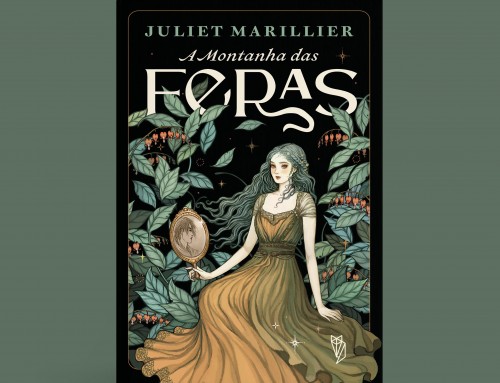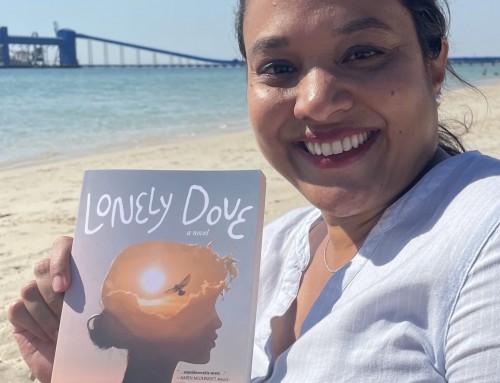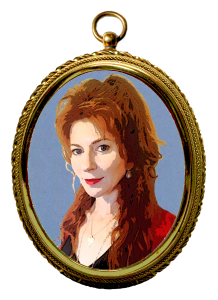 I recently had the pleasure of reading Alison Goodman’s new novel, Lady Helen and the Dark Days Club, a heady and highly original blend of Regency romance and dark fantasy. I think this novel, and the sequels to come, is going to appeal to a very wide readership, as it combines meticulous research with great pacing and strong characterisation. And of course, there’s the uncanny element, which sometimes verges on horror. Lady Helen’s Regency England is not solely a place of fashion, court presentations, carefully managed social interactions and hopes of an advantageous marriage, though all are present in the story, along with a window into the lives of the less well-to-do. It has a secret underbelly in which powerful demonic presences lurk.
I recently had the pleasure of reading Alison Goodman’s new novel, Lady Helen and the Dark Days Club, a heady and highly original blend of Regency romance and dark fantasy. I think this novel, and the sequels to come, is going to appeal to a very wide readership, as it combines meticulous research with great pacing and strong characterisation. And of course, there’s the uncanny element, which sometimes verges on horror. Lady Helen’s Regency England is not solely a place of fashion, court presentations, carefully managed social interactions and hopes of an advantageous marriage, though all are present in the story, along with a window into the lives of the less well-to-do. It has a secret underbelly in which powerful demonic presences lurk.
Alison Goodman is an internationally successful, award-winning Australian writer whose track record is an extremely versatile one. She is probably best known for the epic fantasy duology, Eon and Eona, both New York Times bestsellers. But she has also written both science fiction and crime.
The Australian edition of Lady Helen and the Dark Days Club is available now from Angus & Robertson (an imprint of HarperCollins.) I was a little surprised to find it in the young adult section of the bookshop. The US and UK editions have been released under the title The Dark Days Club.
I was delighted when Alison agreed to be interviewed for the blog.
Alison, congratulations on the new book. This is no ordinary Regency novel! Could you tell readers a bit about the story?
Thank you so much, Juliet – I hoped to create a story that brought something unusual to the genre! Lady Helen and the Dark Days Club is set in May 1812 and follows the adventures of Lady Helen Wrexhall. She is about to make her curtsy to Queen Charlotte and step into Regency society. However, that step will also take her into a shadowy world of demonic creatures, deadly power, and a dangerous alliance with the dubious and infuriating Lord Carlston. The novel is primarily a coming-of-age historical novel with a shot of high voltage fantasy and a dash of dashing romance!
The Regency period is one of the most popular for writers of historical fiction. But it’s not a well-trodden path for historical fantasy writers. What made you decide to tackle this period? How did you make it your own? This is most certainly not ‘Pride and Prejudice with Demons.’
I’ve always loved the Regency period. As a young teenager I read all of Georgette Heyer’s historical novels in one glorious glut and then moved on Jane Austen. After that came the wonderful 1995 BBC production of Pride and Prejudice with Colin Firth and Jennifer Ehle, and that just stoked my Regency love-fire. However, I always felt that I wasn’t up to the heavy load of research that the period demanded, so I never even contemplated writing a novel set in the period. Flash forward to 2011: I went to an excellent session about researching the Regency by Jen Kloester–a Georgette Heyer expert–at the Romance Writers’ Conference. Jen’s session showed me that with all the new resources available, I could manage the kind of in-depth research I wanted to achieve in my world building. After that epiphany, I took the tram home, all abuzz, and as I stared out of the window I asked myself what kind of Regency novel did I want to read now? The answer came in a rush. An adventure that was historically accurate, and that mashed together three of my passions: Regency society, a strong female protagonist and dark fantasy.
I know you’ve done a vast amount of research for Lady Helen and the Dark Days Club, and not always by reading books. I’d love to know a bit more about your personal forays into the clothing of the period, and how that helped with, for instance, the scenes where Helen has to perform physical feats while wearing her stays and long skirt!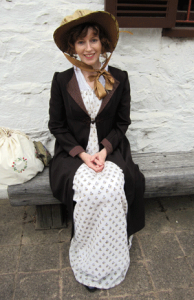
I have to admit that my sewing skills are virtually non-existent, so I went the route of my Regency characters: I hired a seamstress! I commissioned a full Regency wardrobe including a chemise, boned stays, petticoat, a day gown, a ball gown, a chemisette, and of course a pelisse coat and a spencer jacket. I am proud to say that I did make my own bonnet! The fact that I made it too small for my head and had to pull the whole thing apart and make it again has no bearing upon my triumph. . .
Apart from the glorious fun of dressing up (I regularly attend the Jane Austen Festival Australia and other Regency events), I wanted to experience the way the clothes of the period would help or hinder my characters as they went about their business of pursuing demons. I found out that the classic diamond shaped back panel of a Regency gown, spencer or pelisse makes it extremely difficult to lift your arms above your head. So, no overhead swinging of that sword, and thrust up with the knife, not down. The long hems are also a problem when running, as are the kid leather slippers (every stone can be felt through the thin soles). And trying to scale a high wall in a Regency ensemble is very problematic, especially since ladies did not wear knickers.
Did your research-related travel lead you to any fascinating byways? I’ve found it’s often the small, quirky details that make a historical setting come alive.
I totally agree – it is those detail gems that can really add sparkle to a setting. Whenever I can manage it, I like to visit the places that my characters inhabit. On one trip to London, I visited Half Moon Street in Mayfair, where Lady Helen lives. I looked down the road towards Green Park and the morning fog (or perhaps smog) was so dense that only the silhouettes of the trees in the park could be seen. In the Regency era, the accumulated smoke in the air from the burning of coal often made it almost impossible to see clearly beyond a few feet. There is a scene in the novel in which Lady Helen and her maid Darby walk down Half Moon Street towards Piccadilly, and through the smoky fog, they see a threatening figure on the edge of Green Park . . .
I loved the character of Helen. She’s believable as a young woman of her time and social standing, but she’s also tall and physically capable and has a level head on her shoulders. I enjoyed the tension between her understanding of what is expected of her by society and the family, and the increasing desire to see justice done even at a great personal cost. How did she evolve as you worked on the novel?
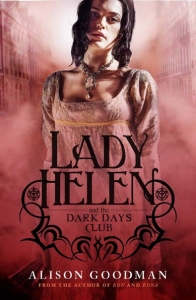 Thank you – I love Lady Helen too! I have a particular method of building characters that I have used for a very long time now that I call the portal method. My first step is to think of at least three important events that have happened in a character’s past. The events can be good or bad, but they have to be significant. These are the portals through which I look when I am planning a particular scene. For instance, Lady Helen lost both her parents when she was ten. They drowned in a yachting trip and their bodies were never found. So out of that comes a whole slew of character traits and information, all based on what I imagine would be the psychological consequences of that event. For instance, the loss makes Helen feel a sense of abandonment, it has also made the idea of family very important to her and she has grown up to be quite cautious. When it comes time to writing a scene that has a link to family — perhaps between Helen and her brother — then some of those traits would come into play. I focus the scene through that “Family/Loss” portal. These are the base lines from which I build the character’s responses, and because these are fixed events in the character’s life they provide cohesiveness to the overall characterization. That does not mean, however, that there is no place for organic development as well. I think of a novel as a constant shift and balance between character and plot as I move through the manuscript. A character’s choice in a situation—built from those portal bases––may affect the trajectory of the plot and vice versa. In other words, if my character would never make the choice that the plot requires then I must either change the plot or the character and that is a decision made upon many factors. A lot of this is done at the planning stage, but as every author knows, a novel can throw up some curly problems at you, which is half the fun!
Thank you – I love Lady Helen too! I have a particular method of building characters that I have used for a very long time now that I call the portal method. My first step is to think of at least three important events that have happened in a character’s past. The events can be good or bad, but they have to be significant. These are the portals through which I look when I am planning a particular scene. For instance, Lady Helen lost both her parents when she was ten. They drowned in a yachting trip and their bodies were never found. So out of that comes a whole slew of character traits and information, all based on what I imagine would be the psychological consequences of that event. For instance, the loss makes Helen feel a sense of abandonment, it has also made the idea of family very important to her and she has grown up to be quite cautious. When it comes time to writing a scene that has a link to family — perhaps between Helen and her brother — then some of those traits would come into play. I focus the scene through that “Family/Loss” portal. These are the base lines from which I build the character’s responses, and because these are fixed events in the character’s life they provide cohesiveness to the overall characterization. That does not mean, however, that there is no place for organic development as well. I think of a novel as a constant shift and balance between character and plot as I move through the manuscript. A character’s choice in a situation—built from those portal bases––may affect the trajectory of the plot and vice versa. In other words, if my character would never make the choice that the plot requires then I must either change the plot or the character and that is a decision made upon many factors. A lot of this is done at the planning stage, but as every author knows, a novel can throw up some curly problems at you, which is half the fun!
Some of the scenes in this novel are pretty confronting, and as I mentioned in the intro, I was surprised to see it marketed as YA in Australia. Did you intend it for that age group from the start or was that a publisher’s decision? It feels like an adult novel to me, or at least age 16+.
I always meant it to be a crossover novel and HarperCollins have published it under their Angus and Robertson imprint rather than a YA or genre specific imprint to take that into account. It does have some quite strong moments—particularly set around the demons. For me they are symbolic of the suppressed desires and yearnings buried beneath the restraint and politeness of Regency society. I would say that the book is definitely aimed more at mature YA readers and adult readers who enjoy a gradual, suspenseful reveal of a hidden world, and who want to immerse themselves in the Regency era.
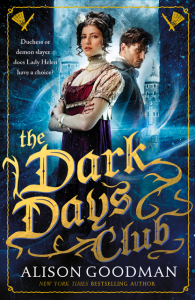 I’d love to know about your writing method. Planner or pantser, or somewhere between? Many drafts or one continuously edited draft? How long does it take you to complete a novel from first idea to polished manuscript? How much of your research gets into the final novel?
I’d love to know about your writing method. Planner or pantser, or somewhere between? Many drafts or one continuously edited draft? How long does it take you to complete a novel from first idea to polished manuscript? How much of your research gets into the final novel?
You may have gathered from my answer about Lady Helen’s character that I am a bit of hybrid of planner and pantser with a bit more of a lean towards planning, particularly at the start of a novel. I used to be a complete planner, but Lady Helen is my fifth novel and I seemed to have become a bit more “organic” in my writing method. I write one continuously edited draft and I write in chronological order—I never skip ahead—which can be a bit hairy when I get stuck on a scene, but I like to build suspense and tension out of what has gone before. In terms of how much research makes it into the novel–that is really hard to quantify. I researched full time for about 8 months before I even started to write in order to get a solid foundation of the facts and sensibilities of the period in my head and heart. Probably every word I wrote was informed by that foundation.
When you’re writing dialogue, how do you balance what’s appropriate for the period with the emotional heft and immediacy some contemporary readers expect? Does historical accuracy sometimes get in the way of storytelling and if so how do you fix it? A number of the secondary characters in Lady Helen are real historical figures.
For me, I find that dialogue is a matter of “ear”. I am constantly muttering to myself as I write, trying out each character’s part of the conversation and listening for the flow of the writing. My rule of thumb is to get across the meaning of the dialogue in the most economical way possible, while still retaining some flavour of the way that I imagine conversations progressed in the Regency. It is a fine balance that is often tweaked during the editing process.
Historical accuracy can sometimes get in the way of storytelling. It didn’t happen too much in Book 1 – I only had a few instances where I decided that the requirements of the story overrode historical accuracy. For instance, the Vauxhall Gardens season did not open until June in 1812 due to renovations, but I opened them in May because I wanted to set a pivotal scene in The Dark Walk! Accuracy popped up more as an issue in Book 2. The climax is built around a real historical incident and some of the real events were causing me enormous action sequence headaches. I can’t say more than that. To quote Professor River Song: spoilers, sweetie!
I understand Lady Helen and the Dark Days Club is the first instalment of a trilogy. How far advanced are you with the others in the series? What are you currently working on?
Book 2, which is set in Brighton during the summer social season, is already with the publisher and will be coming back to me soon for editing. It is due out this coming Christmas/New Year. I’m now working on Book 3, which is set in Bath during the winter social season.
Your publishers have done you proud with the covers of the various editions. Do you have a favourite among these?
I am one lucky author – three gorgeous covers! My favourite constantly changes: one day I am in love with the rose 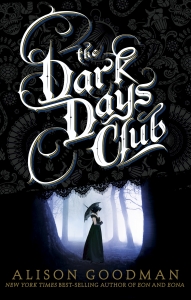 gold sheen and attitude of the Lady Helen figure on the Australian cover, the next day I am swooning over the gold embossed title on the UK edition and the hunky Lord Carlston, and don’t get me started on the satin finish on the USA hardback and its magnificent title font and exquisite endpapers. They are all brilliant for their market and, in themselves, beautiful.
gold sheen and attitude of the Lady Helen figure on the Australian cover, the next day I am swooning over the gold embossed title on the UK edition and the hunky Lord Carlston, and don’t get me started on the satin finish on the USA hardback and its magnificent title font and exquisite endpapers. They are all brilliant for their market and, in themselves, beautiful.
Last but not least, where can Australian readers purchase a copy of Lady Helen and the Dark Days Club? And when will the book be available in the US and the UK?
Australian, UK, USA and Canadian readers can now pick up a copy in all good bookstores (as the saying goes), as well as on-line for all the various e-book platforms. For Aussie readers, my Mum has seen it in Target—I suspect she may have turned all the covers to face outwards––and a friend has reported seeing it in the wild at Kmart too!
Thank you so much for the interview, Alison! American readers, Alison will be touring the US early this year to promote The Dark Days Club, so keep an eye on her website for further details.You’ll find it at darkdaysclub.com

